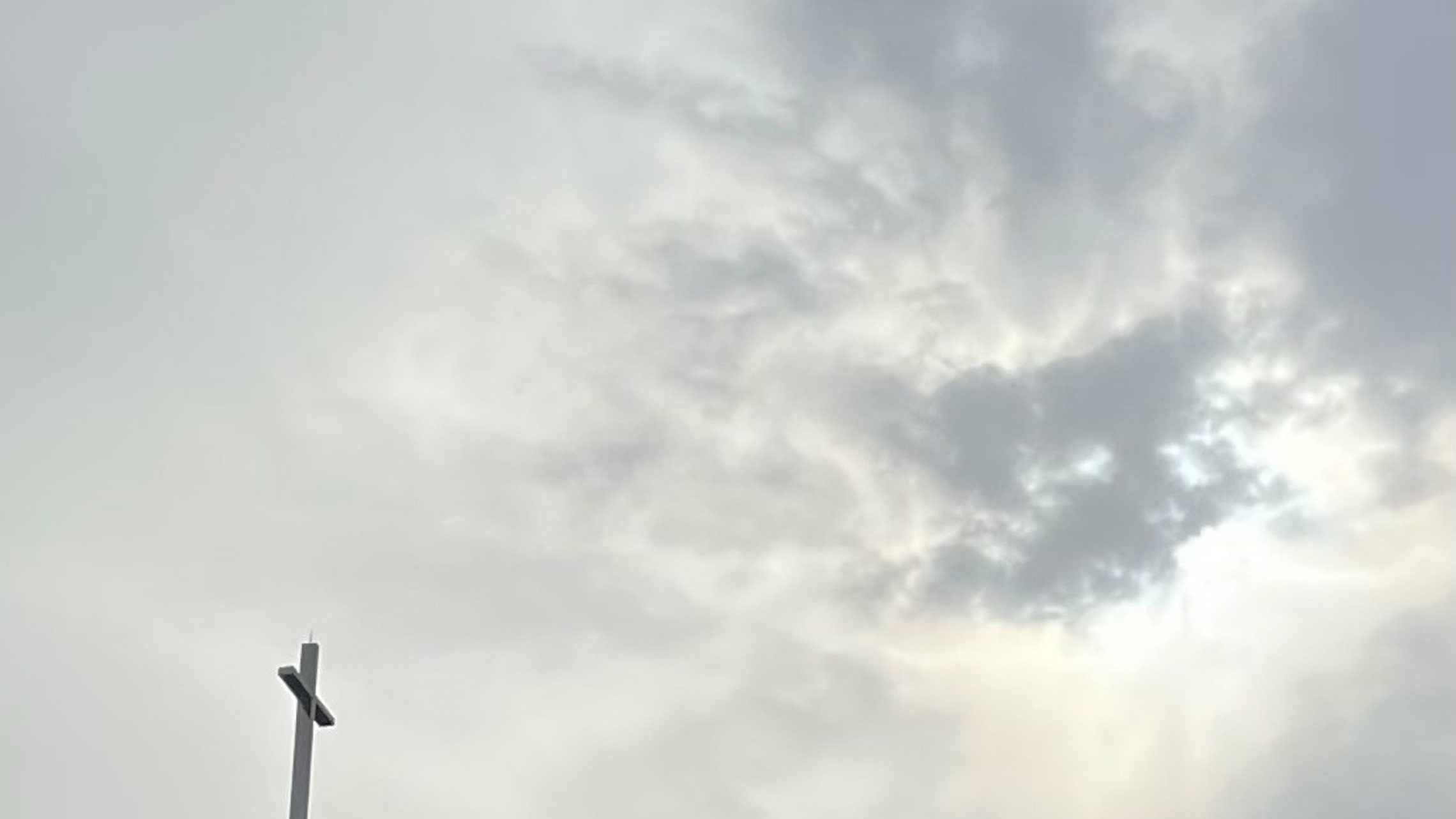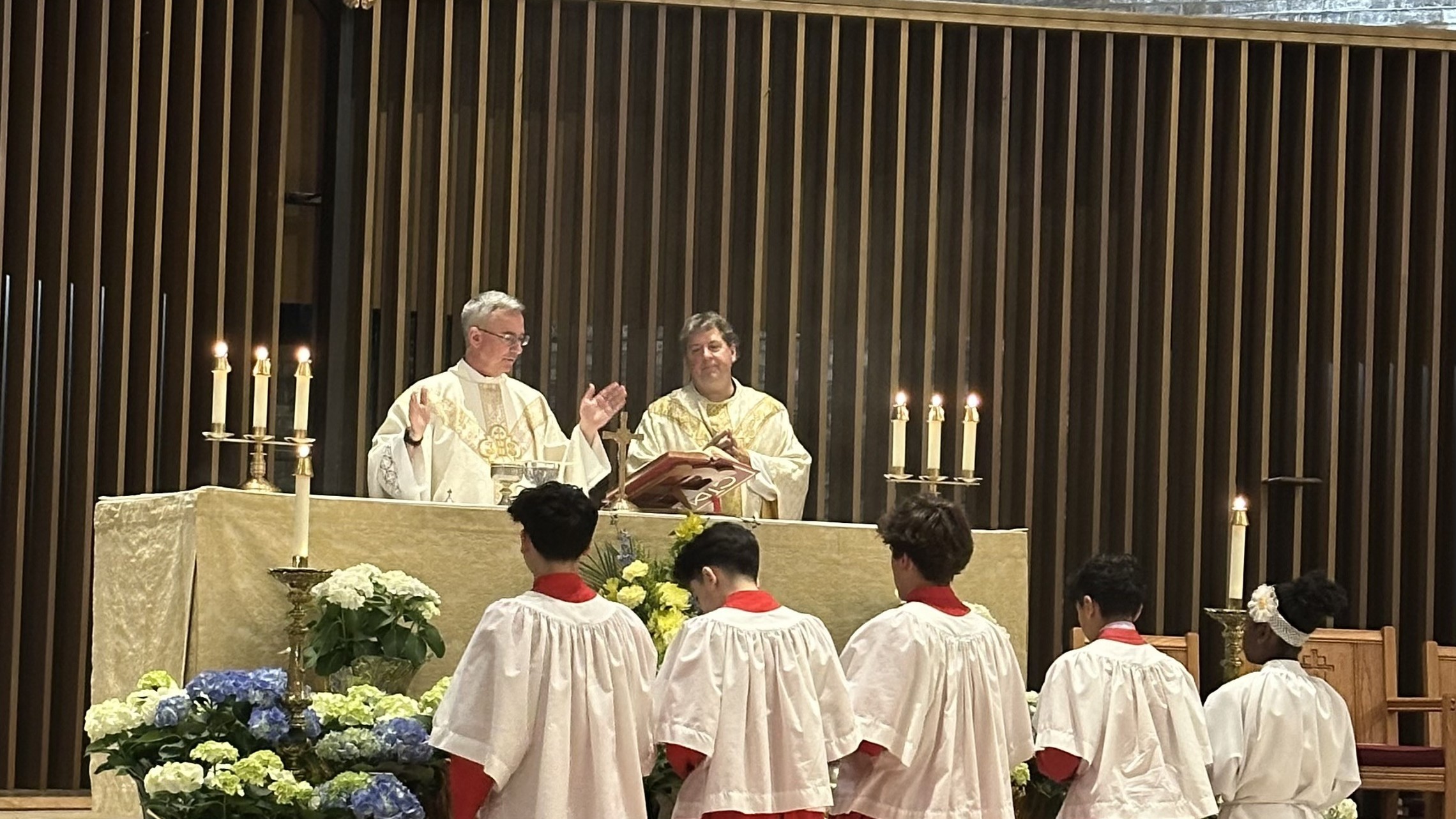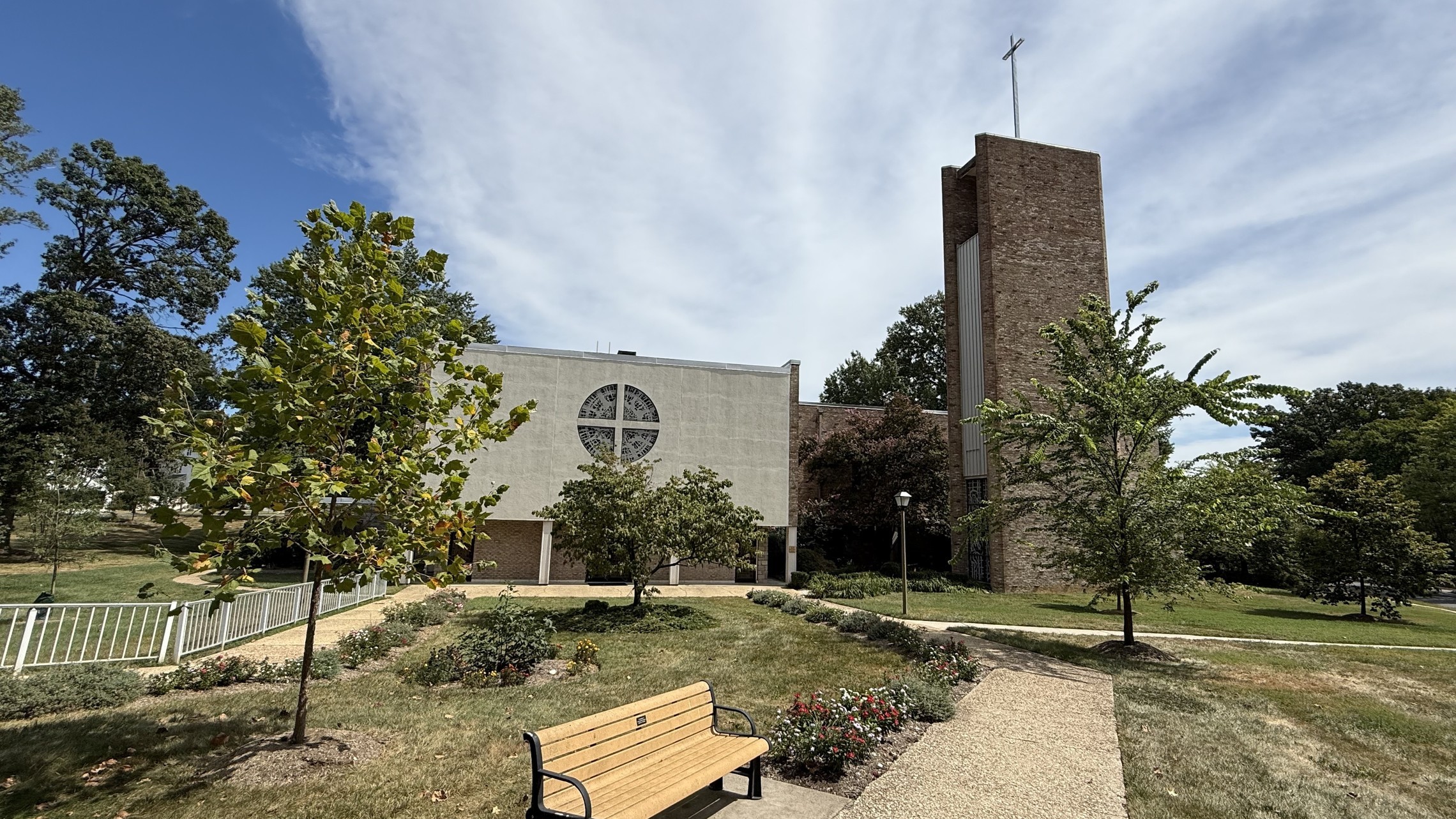The Dawn of the New World

Reflections on the Assumption of Mary by Fr. Frederick Edlefsen
As the Franco-Prussian War was ending on January 28, 1871, the defeated French negotiated an armistice. The victorious Germans agreed not to invade Paris and allowed food into the city. Why? Nobody knows. Maybe they wanted France to be in a position to pay war indemnities. Like the Cuban missile crisis ninety years later, the resolution remains uncanny to historians and history-makers alike. Providence is mysterious. All things come to pass at the hour appointed by the Father.
God’s hand is in everything, even in man’s spurious intentions. What we know from history books and media is only the surface of things. It is the events we don’t see — the invisible conflicts beween Day and Night (Genesis 1:3-5) — that drive the history we think we know.
On the evening of January 17, eleven days before the armistice, in the village of Pontmain near the advancing Prussian army, Joseph Barbadette (age 10) and his brother Eugene (age 12) were working in the barn with their father Cesar. Eugene looked from the barn door into the evening stars and saw a radiant woman in the night sky, wearing a royal blue gown, gleaming with gold stars. Her head was capped with a gold crown and a black veil. Upon seeing the vision, Eugene called his father and younger brother. Joseph saw the woman too, but his father didn’t.
As word spread, neighbors came out looking for the woman in the starry sky. Some children saw the lady, but adults only saw a triangle of three bright stars. Then, a banner appeared to the children. It said: "PRAY, MY CHILDREN. GOD WILL ANSWER BEFORE LONG. MY SON LETS HIMSELF BE MOVED.” Someone read aloud the message, and the gathering spontaneously sung the popular French hymn, Mother of Hope.
Two days before, no one would sing that song out of fear for the lives of 38 young men from Pontmain fighting in the war. When they sang My Sweet Jesus, the lady sorrowfully looked at a red crucifix that appeared in her hand with a white placard, scripted with the words “Jesus-Christ.” The village folk continued the vigil, led by their parish priest Fr. Guerin and some nuns. When the crowd sang Ave Maris Stella, the Cross vanished and the lady smiled but still looked a bit sad. When the prayers ended, a white veil rose from Mary’s feet and covered her, and she disappeared. “It’s over,” the children said. The apparition lasted three hours.
The following year, on the Feast of the Presentation (February 2), the bishop of the Diocese of Laval, Msgr. Wicart, declared, “We judge that the Immaculate Virgin Mary, Mother of God, truly appeared to Eugène and Joseph Barbedette, Françoise Richer and Jeanne-Marie Lebossé in the village of Pontmain on 17 January 1871.” This decree followed upon an investigation and intense interviews with the visionary children. Later in life, Eugene and Joseph became priests; Jeanne-Marie became a nun; and Francois dedicated his life to the Church. The bishop had a sanctuary built to honor the apparition under the title Our Lady of Hope. Pope Pius X elevated the sanctuary to a Basilica in 1905, and Pope Pius XI decreed in 1934 that the statue of the Mother of Hope be solemnly honored with a gold crown.
Our Assumed Lady’s appearances, during some of history’s critical moments, are reminders that God sets strict limits on evil. He safely guides his faithful through life’s trials. When evil seems victorious, something inexplicable happens. A door is shut and another is opened. History is full of such cases. As for authentic apparitions of Mary, however, these are stunning interventions of Providence, reminding us of what’s happening even when Mary doesn’t appear. These appearances seem to be God’s special “signs” that give us hope and courage, and prepare us for the End of the world.
As history’s End nears, the lawlessness of the Antichrist, working from the Evil One, will seem to have more and more free reign on man. By all human reckoning, the cause for hope will seem lost. The Church and all good people will be tempted to despair. But in history’s darkest moment, Christ will come again (as we say in the Creed) and personally strike down Satan and the Antichrist (Catechism of the Catholic Church, 675-677). Commenting on 2 Thessalonians 2:6-8, St. Thomas Aquinas said that, throughout history, the spirit of Antichrist is always “at work in false men who seem good and yet are evil” and that “these play the role of the Antichrist.” Aquinas said, “The Devil, in whose power the Antichrist will come, has secretly begun to work his wickedness through tyrants and deceivers, because persecutions of the Church...are figures of that final persecution of all good men...” History is ultimately a supernatural conflict between Good and Evil — between the Woman and the Dragon — that will be consummated at the Last Judgment (Revelation 12:1-5):
A great sign appeared in the sky, a woman clothed with the sun, with the moon under her feet, and on her head a crown of twelve stars. She was with child and wailed aloud in pain as she labored to give birth. Then another sign appeared in the sky; it was a huge red dragon, with seven heads and ten horns, and on its heads were seven diadems. Its tail swept away a third of the stars in the sky and hurled them down to the earth. Then the dragon stood before the woman about to give birth, to devour her child when she gave birth. She gave birth to a son, a male child, destined to rule all the nations with an iron rod. Her child was caught up to God and his throne.
The 16th century appearance of Our Lady of Guadeloupe to St. Juan Diego prepared the Western Hemisphere for a long embattled history that’s still going on today. Mary’s appearances in the 19th century, most notably in France (LaSalette, Lourdes and Rue de Bac), and in Fatima in 1917, were apocalyptic visions of the Assumption.
The radiant Mother encouraged her little ones to pray and trust Jesus, and to flee the Dragon with help of St. Michael the Archangel. These visions are a continuation of a biblical event: St. John’s vision of the Woman on the Isle of Patmos (Revelation 12). By appearing to simple, devout and innocent children, our Assumed Mother prepares us all for the trials of faith that lead up to the final trial that precedes the Second Coming. This is Mary’s mission as Mother of the Church: to prepare us for the End of the World, the Second Coming, and the Last Judgment. Without a doubt, this was the supernatural insight behind Pope Pius XII’s solemn definition of Mary’s Assumption as a dogma of the Church in 1950. In the wake of history’s most grievous evils, Pius XII pointed the world’s eyes to Mary, the Dawn of the New World.
The Second Vatican Council prophetically chose the title Mother of the Church to define Mary’s role in the modern world. This may be the most significant title given to Our Lady since the Council of Ephesus called her Mother of God (Theotokos) in the 5th century. Mother of the Church is an apocalyptic title, identifying Mary with the Woman in Revelation 12. In that vision, she was giving hope to a despairing St. John, the last living Apostle, who was exiled on the Isle of Patmos. The Woman in Revelation is at once (1) the fullness of Israel, (2) the perfection of the Church, and (3) the Mother of Christ. In Pontmain, the appearance of the Woman gave hope to the despairing people of a small village. She gave them supernatural courage to resist the Dragon: "PRAY, MY CHILDREN. GOD WILL ANSWER BEFORE LONG. MY SON LETS HIMSELF BE MOVED.” Mary’s Assumption begins the Dawn of the New World, which rises from the smoke of sin, evil and disorder, wrought by the malice of Satan. May we turn our eyes to this Dawn.
Mary, the Mother who cared for Jesus, now cares with maternal affection and pain for this wounded world. Just as her pierced heart mourned the death of Jesus, so now she grieves for the sufferings of the crucified poor and for the creatures of this world laid waste by human power. Completely transfigured, she now lives with Jesus, and all creatures sing of her fairness. She is the Woman, “clothed in the sun, with the moon under her feet, and on her head a crown of twelve stars.” Carried up into heaven, she is the Mother and Queen of all creation. In her glorified body, together with the Risen Christ, part of creation has reached the fullness of its beauty. She treasures the entire life of Jesus in her heart, and now understands the meaning of all things. Hence, we can ask her to enable us to look at this world with eyes of wisdom” (Pope Francis, Laudato Si, 241).



